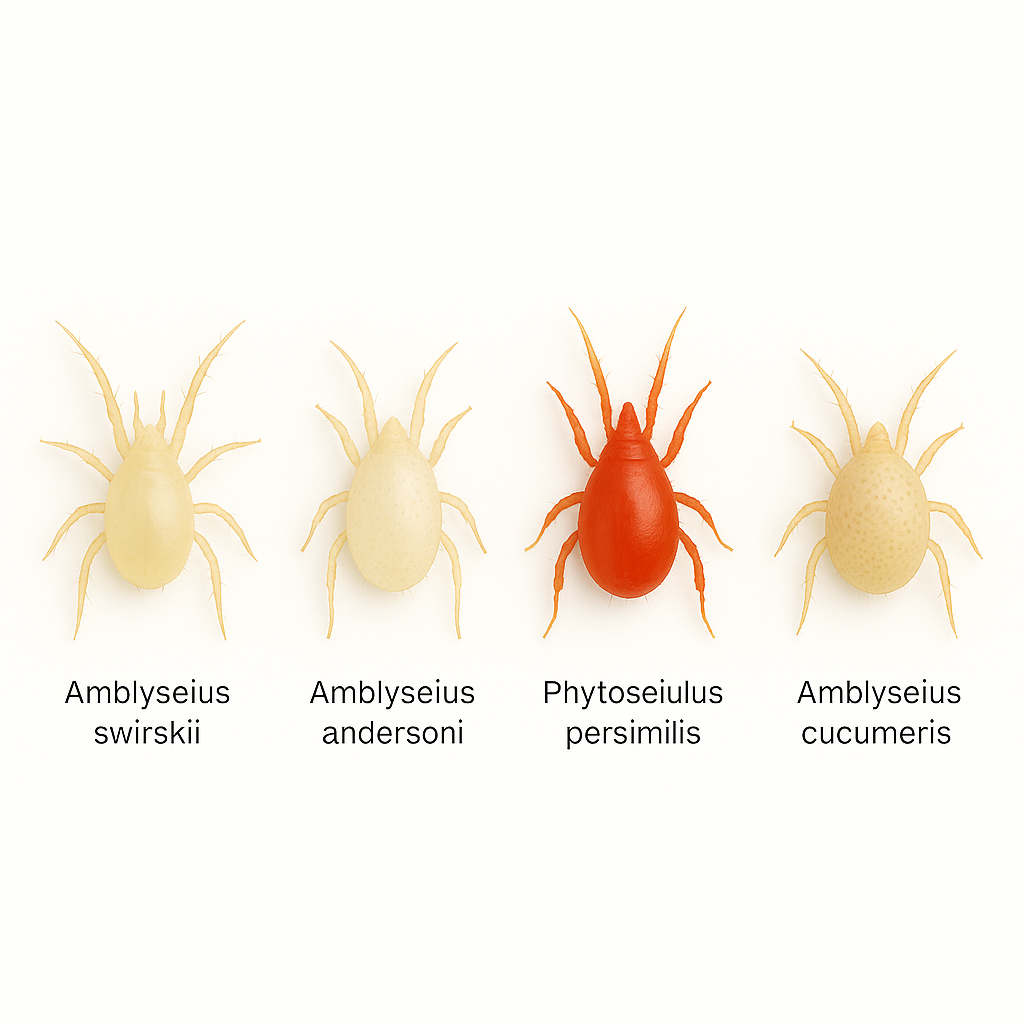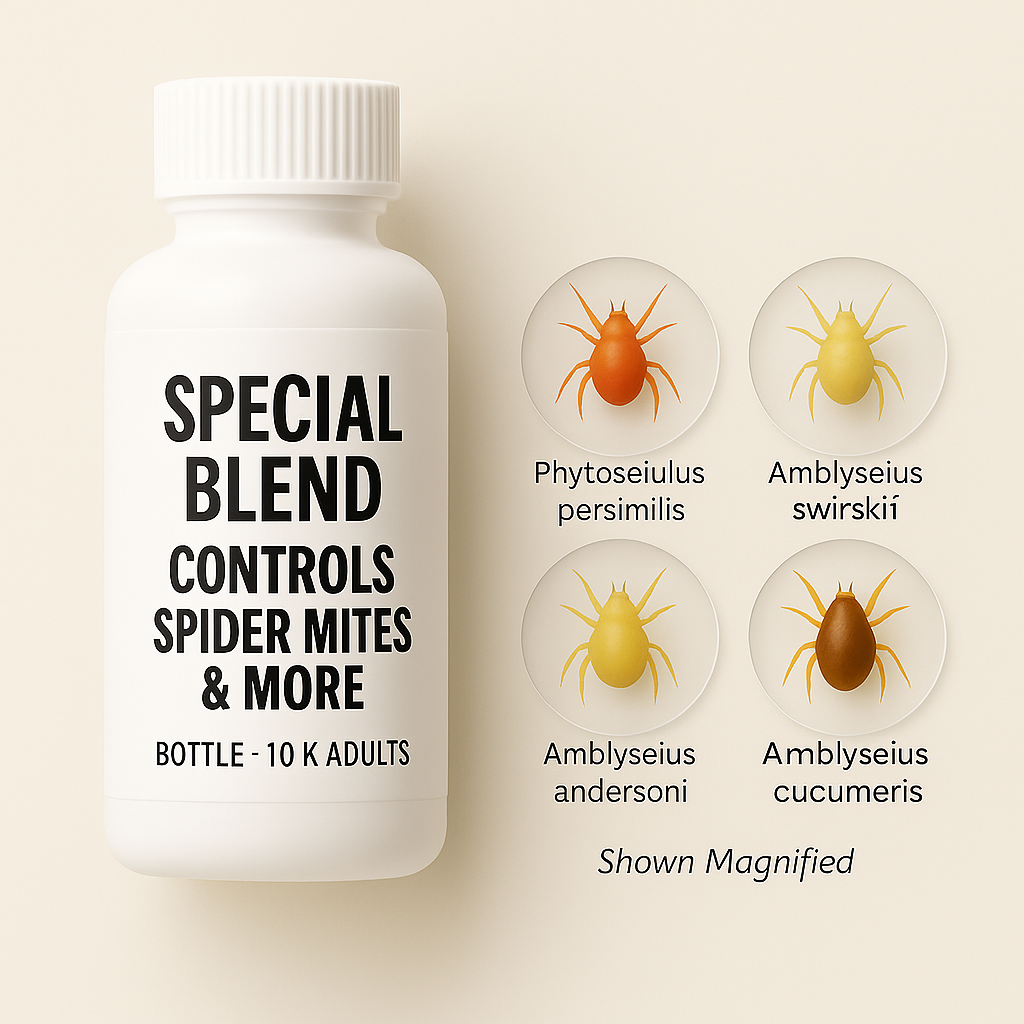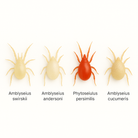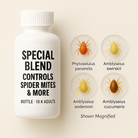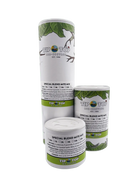Seeing Webbing, Twisted Leaves, or Bronzing?
If your Alocasia’s dropping leaves, your Philodendron’s new growth looks warped, or you’ve noticed mysterious webbing in the corners of your setup—there’s a good chance you’re dealing with mites. And if you've already wiped down leaves or tried neem to no effect, you're past prevention. It's time for a treatment that works.
Special Blend Predatory Mite Bottles (Adults Only)
For active infestations of spider mites, broad mites, russet mites, rust mites, and thrips larvae.
This is a high-intensity, broad-spectrum solution made for growers who are already seeing pest damage. It contains four species of live adult predatory mites that get to work immediately—no eggs, no lag, no chemical foggers.
What This Treats
| Pest | What You’ll Notice | Common Hosts |
|---|---|---|
| Spider mites | Fine webbing, stippling, leaf drop | Alocasia, Calathea, Monstera |
| Broad mites | Twisted or hardened new growth | Philodendron, Anthurium, African violets |
| Russet mites | Bronzed or brittle leaves | Hoyas, Syngonium, succulents |
| Rust mites | Dull, patchy leaves | Aroids, orchids, citrus |
| Thrips larvae | Silver streaks, scarring | Peperomia, Philodendrons, ferns |
Note: This blend controls thrips larvae, not adults. If you're seeing adult thrips flying or crawling, pair with Orius insidiosus for full coverage.
Why Bottles?
-
No downtime — contains only fast-moving adults, ready to hunt
-
Outbreak-ready — built for visible pest pressure
-
Direct application — pour onto infested plants or hot spots
-
Safe indoors — no residue, no smell, no sprays
-
Broad spectrum — works across multiple mite types, not just one
Who’s in the Bottle?
This isn’t some random mite mix. It’s a strategic four-species team designed to work across humidity swings, plant types, and pest stages:
-
Phytoseiulus persimilis – spider mite assassin; fast reproduction, high appetite
-
Amblyseius swirskii – targets broad mites and thrips larvae; thrives in warmth
-
A. cucumeris – early-stage thrips and broad mite control
-
A. andersoni – climate-tolerant generalist that holds steady in cooler or fluctuating rooms
They don’t just attack pests—they disrupt the whole reproduction cycle.
How Fast Does It Work?
You’ll usually see signs of suppression within 2–5 days. Here’s what’s happening in that window:
-
Adults spread out and begin feeding
-
Females lay eggs near pest clusters
-
Eggs hatch in 2–3 days
-
New predators begin hunting within the week
-
Adults keep feeding and reproducing for up to 30 days
This is why it works even after release. It’s not one and done—it’s rolling control.
How Much Do You Need?
| Infestation Level | Suggested Mite Count | Covers… |
|---|---|---|
| Light | 1,000–5,000 | A few infested plants or a single shelf |
| Moderate | 10,000–20,000 | A grow tent, cabinet, or multi-shelf setup |
| Heavy | 25,000+ | Whole-room collection or rapid outbreak |
| Long-term prevention | Add sachets every 2–4 weeks | Keeps predators in play post-treatment |
Go higher if you're unsure. Too few mites = wasted effort. Too many = faster suppression.
How to Apply
-
Use immediately on arrival
-
Shake bottle gently to distribute mites
-
Pour onto affected leaves, soil surface, or soft cotton in the canopy
-
Avoid chemical sprays before/after release—they’ll kill the mites too
-
Best deployed in the early morning or evening when temps are stable
-
For dry homes (under 50% RH), mist lightly to support reproduction
Science Notes
-
These are Phytoseiid mites, known for short life cycles and high prey specificity
-
At ~77°F and 60%+ humidity, P. persimilis completes its life cycle in ~5 days
-
Adults may consume 5–20 spider mite eggs or juveniles per day
-
Reproduction slows if RH drops below 60%, so boosting microclimate humidity helps
-
Swirskii and andersoni remain active in slightly cooler or more variable conditions
Shipping & Storage
-
Ships overnight with Live Arrival Guarantee
-
Use as soon as possible
-
If needed, store at 42–48°F for up to 48 hours. Do not freeze.
FAQ
How does the Live Guarantee work?
We know how important it is for your mites to arrive healthy and ready to work. That’s why we offer a live arrival guarantee—with flexible options depending on when we hear from you:
- Let us know within 24 hours of delivery: We’ll gladly send a free replacement shipment.
- Let us know within 2–3 days of delivery: We can offer store credit to make things right.
- After 3 days from delivery: Because these are living organisms, we’re not able to offer replacements or credit beyond that window. By then, it’s harder to know what went wrong or whether shipping conditions were a factor.
We truly want your mites to succeed—so please open your package as soon as it arrives and check on them. If something doesn’t look right, don’t wait—reach out and we’ll take care of you.
Where are you located?
We have a number of different locations in NJ, Maine and Oregon. While we'd love to have you, we are not currently open to the public.
Can I call you?
We get it. Sometimes it's easier to talk to someone, and on a case by case basis we can try to figure it out. Unfortunately though, we're really not able to take calls—FGMN is a small nursery, and we're usually elbows-deep in plants or packing boxes. To make sure nothing gets missed (and everyone gets a timely reply), we keep all communication in writing.
Feel free to message us at info@fgmnnursery.com. We mostly respond quickly, but every once in awhile replies may take a day. Do follow-up if you don't hear in that time. We're human, we miss an email here or there.
Too Many Options?
We get it. Try our mite/insect matchmaking quiz and instantly get matched to the solutions you may need.
Our Live Delivery Guarantee
We stand behind every leaf and every mite. If your plant or predatory insects don’t arrive alive on the first delivery attempt, we’ll make it right.
Here’s what you need to know:
- Email us at info@fgmnnursery.com within 24 hours of delivery
- Include clear photos of the item and the shipping label
- Someone must be available to receive the package—plants and bugs don’t do well sitting in the sun, a mailbox, or the back of a delivery truck
For plants, we offer store credit if something goes wrong.
For predatory mites and beneficial insects, you’ll have the choice of a replacement shipment or store credit.
If you contact us after the 24-hour window, we may still be able to help—just know it’s handled case by case.
We pack with care, insulate when needed, and check the weather before shipping. But once it’s in transit, the fastest way to protect your order is to open it right away.
Mite Matters
The Hidden Weather That Shapes Plant and Predator Life
Invisible weather shapes every growing space. Warm air pools under lights, cool air settles near the floor, and in between, tiny predators decide where they’ll thrive. Learn how microclimates influence the balance between plants, pests, and the mites that keep them in check.
If Ladybugs Are Just Going to Fly Away, Why Use Them?
Most ladybugs don’t fly off out of spite — they leave when the environment isn’t right. Learn how temperature, humidity, and shelter affect whether they settle or scatter, and how to create the ideal setup that keeps them working where you need them most.
Where Did My Predatory Mites Go?
Released predatory mites but can’t see them anymore? Don’t panic. Their invisibility is exactly what makes them effective. Learn why they vanish, how they hunt pests out of sight, and why reapplying keeps your plants protected.

